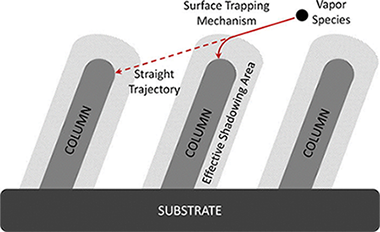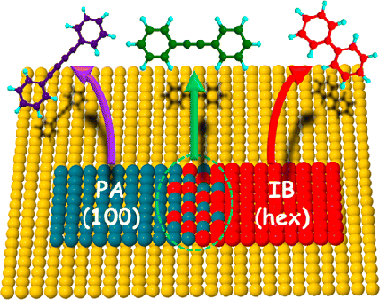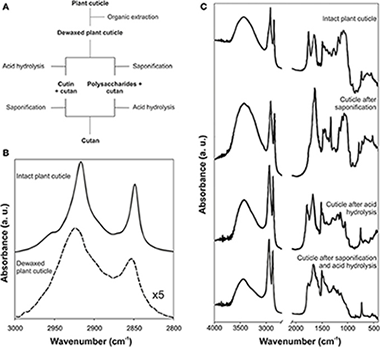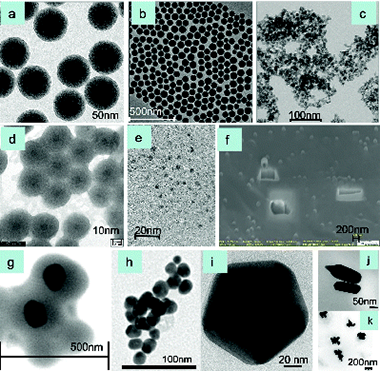Artículos SCI
2014
2014
Nanotecnología en Superficies y Plasma
Nanocolumnar growth of thin films deposited at oblique angles: Beyond the tangent rule
Alvarez, R; Lopez-Santos, C; Parra-Barranco, J; Rico, V; Barranco, A; Cotrino, J; Gonzalez-Elipe, AR; Palmero, AJournal of Vacuum Science & Technology B, 32 (2014) 041802
Show abstract ▽

The growth of nanostructured physical vapor deposited thin films at oblique angles is becoming a hot topic for the development of a large variety of applications. Up to now, empirical relations, such as the so-called tangent rule, have been uncritically applied to account for the development of the nanostructure of these thin films even when they do not accurately reproduce most experimental results. In the present paper, the growth of thin films at oblique angles is analyzed under the premises of a recently proposed surface trapping mechanism. The authors demonstrate that this process mediates the effective shadowing area and determines the relation between the incident angle of the deposition flux and the tilt angle of the columnar thin film nanostructures. The analysis of experimental data for a large variety of materials obtained in our laboratory and taken from the literature supports the existence of a connection between the surface trapping efficiency and the metallic character of the deposited materials. The implications of these predictive conclusions for the development of new applications based on oblique angle deposited thin films are discussed.
Julio, 2014 | DOI: 10.1116/1.4882877
Nanotecnología en Superficies y Plasma
The growth of cobalt oxides on HOPG and SiO2 surfaces: A comparative study
Diaz-Fernandez, D; Mendez, J; Bomati-Miguel, O; Yubero, F; Mossanek, RJO; Abbate, M; Dominguez-Canizares, G; Gutierrez, A; Tougaard, S; Soriano, LSurface Science, 624 (2014) 145-153
Show abstract ▽

The growth of cobalt oxides by reactive thermal evaporation of metallic cobalt on highly oriented pyrolytic graphite (HOPG) and SiO2 (X cut quartz surface), in an oxygen atmosphere at room temperature, has been chemically and morphologically studied by means of X-ray photoelectron spectroscopy and atomic force microscopy. The chemical analysis, which also includes cluster calculations, reveals that for the early deposition stages on both substrates, Co2 + species are stabilized at the surface up to a coverage which depends on the substrate. Further coverages lead to the formation of the spinel oxide Co3O4. The results are discussed in terms of the dependence of the surface energy on the size of the CoO deposited moieties. On the other hand, it has been found that the initial way of growth of cobalt oxides on HOPG is of Stranski–Krastanov mode whereas on SiO2 the growth is of Volmer–Weber mode. The differences in the growth morphology have been discussed in terms of the surface diffusivity of the CoO deposits on the substrates.
Junio, 2014 | DOI: 10.1016/j.susc.2014.02.007
Nanotecnología en Superficies y Plasma
The Flexible Surface Revisited: Adsorbate-Induced Reconstruction, Homocoupling, and Sonogashira Cross-Coupling on the Au(100) Surface
Sanchez-Sanchez, C; Yubero, F; Gonzalez-Elipe, AR; Feria, L; Sanz, JF; Lambert, RMJournal of Physical Chemistry C, 118 (2014) 11677-11684
Show abstract ▽

Phenylacetylene (PA) and iodobenzene (IB) are prototypical reactants in Sonogashira cross-coupling. Their adsorption behavior and reactivity on the Au(100) surface were studied by STM, temperature-programmed desorption and reaction, and DFT calculations that included the effect of dispersion forces. The two species exhibited very different behavior. Thus, even at 200 K, PA rearranged Au surface atoms so as to lift the hex reconstruction and adsorb in 4-fold-symmetric islands on the unreconstructed 100 surface. On the other hand, IB adsorbed on the reconstructed hex surface, again as islands, forming three different coexisting close-packed structures. The DFT results are in good accord with these findings, demonstrating the strong preference of PA and IB for the (100) and hex surfaces, respectively. Moreover, the calculated adsorption energies were in satisfactory agreement with values estimated from the desorption data. Adsorbed separately, both PA and IB underwent homocoupling yielding diphenyl diacetylene and biphenyl, respectively; in the former case, reaction appeared to originate at island boundaries. On the well-annealed surface, coadsorbed PA and IB behaved independently, generating only products of homocoupling. However, on the Ar+ roughened surface, Sonogashira cross-coupling also occurred, yielding diphenyl acetylene. These findings are discussed in terms of the island-forming propensity of the reactants, amplified by the labile nature of the Au 100 surface under adsorption and the marked preference of the two reactants for different substrate structures, factors that act to inhibit the formation of a mixed adlayer and suppress reactivity. The implications for the behavior of practical Au nanoparticle catalysts are considered.
Junio, 2014 | DOI: 10.1021/jp501321u
Materiales de Diseño para la Energía y Medioambiente
Infrared and Raman spectroscopic features of plant cuticles: a review
Heredia-Guerrero, JA; Benitez, JJ; Dominguez, E; Bayer, IS; Cingolani, R; Athanassiou, A; Heredia, AFrontiers in Plant Science, 25 (2014)
Show abstract ▽

The cuticle is one of the most important plant barriers. It is an external and continuous lipid membrane that covers the surface of epidermal cells and whose main function is to prevent the massive loss of water. The spectroscopic characterization of the plant cuticle and its components (cutin, cutan, waxes, polysaccharides and phenolics) by infrared and Raman spectroscopies has provided significant advances in the knowledge of the functional groups present in the cuticular matrix and on their structural role, interaction and macromolecular arrangement. Additionally, these spectroscopies have been used in the study of cuticle interaction with exogenous molecules, degradation, distribution of components within the cuticle matrix, changes during growth and development and characterization of fossil plants.
Junio, 2014 | DOI: 10.3389/fpls.2014.00305
Materiales Nanoestructurados y Microestructura
A General Perspective of the Characterization and Quantification of Nanoparticles: Imaging, Spectroscopic, and Separation Techniques
Lapresta-Fernandez, A; Salinas-Castillo, A; de la Llana, SA; Costa-Fernandez, JM; Dominguez-Meister, S; Cecchini, R; Capitan-Vallvey, LF; Moreno-Bondi, MC; Marco, MP; Sanchez-Lopez, JC; Anderson, ISCritical Reviews in Solid State and Materials Sciences, 39 (2014) 423-458
Show abstract ▽

This article gives an overview of the different techniques used to identify, characterize, and quantify engineered nanoparticles (ENPs). The state-of-the-art of the field is summarized, and the different characterization techniques have been grouped according to the information they can provide. In addition, some selected applications are highlighted for each technique. The classification of the techniques has been carried out according to the main physical and chemical properties of the nanoparticles such as morphology, size, polydispersity characteristics, structural information, and elemental composition. Microscopy techniques including optical, electron and X-ray microscopy, and separation techniques with and without hyphenated detection systems are discussed. For each of these groups, a brief description of the techniques, specific features, and concepts, as well as several examples, are described.
Junio, 2014 | DOI: 10.1080/10408436.2014.899890
- ‹ anterior
- 272 of 420
- siguiente ›














